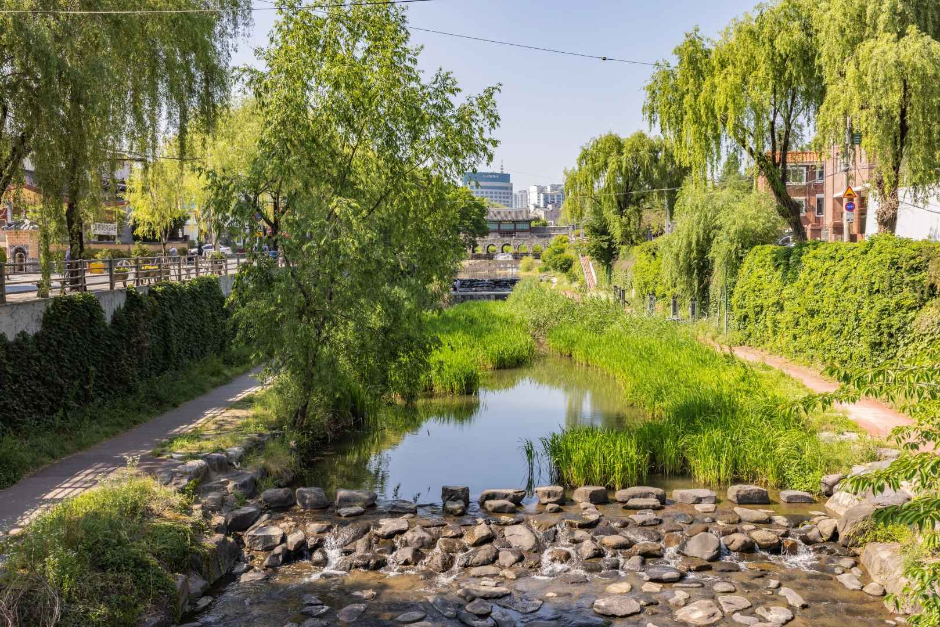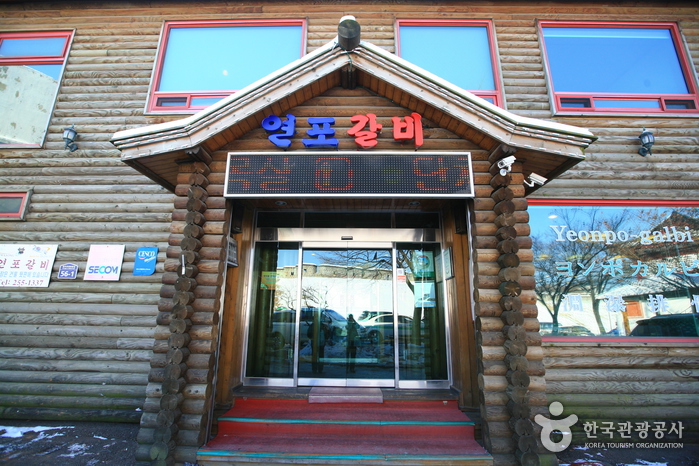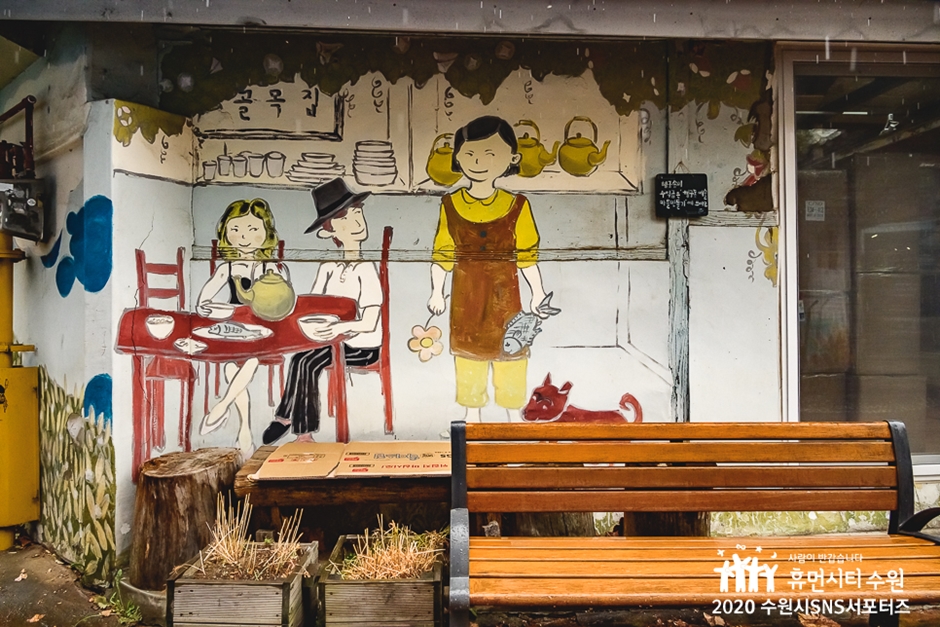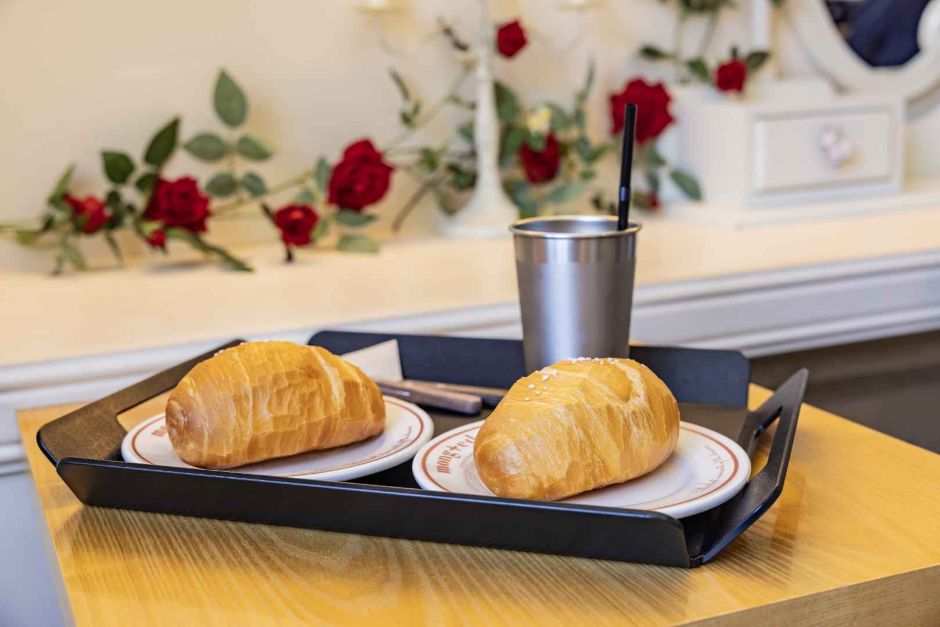Banghwasuryujeong Pavilion (방화수류정(동북각루))
7.6M 2025-05-22
44-6 Suwoncheon-ro 392beon-gil, Paldal-gu, Suwon-si, Gyeonggi-do
+82-31-228-4672
Banghwasuryujeong Pavilion, officially called Dongbukgangnu Pavilion, was built in 1794 during the construction of Suwon Hwaseong Fortress. It sits atop a hill east of Hwahongmun Gate and offers beautiful views of the surrounding scenery. For this reason, the pavilion received the nickname Banghwasuryujeong, meaning a pavilion where one can "find flowers and stroll among willow trees." The pavilion was once damaged due to flooding and reconstructed in 1848, followed by continuous recovery and preservation efforts. In 2011, the pavilion was designated as Treasure No. 1709. Banghwasuryujeong Pavilion is evaluated as one of the most original architectures in Hwaseong for its unique composition and roof design that offer a different look depending on the viewer's angle. Known to be the spot where King Jeongjo would stop by to rest on his way to Hwaseong Fortress, the pavilion offers a bird's-eye-view of Yeonmudae Post to the east and Janganmun Gate to the west with Paldalsan Mountain in the background.
Hwahongmun Gate (화홍문(華虹門))
93.1M 2025-05-22
377 Suwoncheon-ro, Paldal-gu, Suwon-si, Gyeonggi-do
Hwahongmun Gate refers to the northern gate of Hwaseong Fortress among the two main gates installed to control the flow of Suwoncheon Stream that cuts through the fortress. Hwahongmun Gate consists of seven arched watergates in varying sizes. The watergate at the center is larger than the others to control the water flow effectively.
◎ Travel information to meet Hallyu’s charm – TV series “Lovely Runner”
Hwahongmun Gate is known for its beautiful nighttime view, with warm illuminations casting a glow over the gates and walkways. The bridge in front of Hwahongmun, where Sun-jae confessed his feelings to Sol, has become a popular photo spot for fans looking to capture a piece of the romance.
Yeonpo Galbi (연포갈비)
106.1M 2024-12-02
56-1, Jeongjo-ro 906beon-gil, Paldal-gu, Suwon-si, Gyeonggi-do
+82-31-255-1337
This restaurant occupies a remodeled public bath and inn, preserving the original chimney from its bathhouse days. Known for offering Suwon wanggalbi at relatively affordable prices, it also serves galbitang (galbi soup) exclusively during lunchtime on weekdays. Due to limited availability, galbitang often sells out quickly.
Haenggung-dong Mural Village (행궁동 벽화마을)
249.5M 2025-05-22
9-7 Hwaseomun-ro 72beon-gil, Paldal-gu, Suwon-si, Gyeonggi-do
Suwon’s Haenggung-dong is the name for 12 neighborhoods, including Jangan-dong and Sinpung-dong, in the Hwaseong Fortress area. It was the most bustling place in Suwon from when the Hwaseong Fortress was built 220 years ago until just a few decades ago. However, with Hwaseong Fortress being designated as a UNESCO World Heritage Site, time seems to have stopped due to strict development regulations. In the meantime, residents, civic groups, and artists came together to paint murals in effort to make the area become more alive. Due to their efforts, the region has now emerged as a tourist attraction visited by as many people as Hwaseong Fortress.
The Haenggung-dong comprises various alleys connected depending on their characteristics, including the Mural Village, Workshop Street, Suwon Chicken Street, and Jidong Market. The Mural Village is divided into six alleyways by theme, including the Haengbokha (Happy) Road, Saranghada (Love) Road, Nuneuroganeun (to Snow) Road, Cheoeumachim (First Morning) Road, Romance Road, and Dwiroganeun (Backward) Road. A photo zone has been set up in front of the mural, and not only the mural but also the walls, roof, and fence are filled with various sculptures and paintings. Many pretty workshops and cafés nearby are also interesting to look around.
◎ Travel information to meet Hallyu’s charm - TV series "Lovely Runner"
Haenggung-dong Mural Village sets the scene where Sol and Sun-jae walked to school together. It is also where the memorable scene was filmed of Sol dashingly pushing a flustered Sun-jae against the wall. As you stroll along the low stone walls adorned with murals, it’s easy to imagine the couple’s school-day moments, adding a nostalgic charm to your walk.
Janganmun Gate (장안문)
364.8M 2019-12-31
910, Jeongjo-ro, Paldal-gu, Suwon-si, Gyeonggi-do
+82-031-228-4416
Janganmun Gate is the main gate of Hwaseong Fortress at the northern wall. Jangan means capital, implying that Hwaseong Fortress is the secondary capital. Janganmun Gate served as the main gate because the king would pass from this gate when arriving from Hanyang, the capital city, now modern-day Seoul. It is interesting to note that this gate is larger than Sungryemun Gate in Seoul.
Yeonmudae Post (Dongjangdae) (연무대 (동장대))
447.1M 2019-12-31
20, Changnyong-daero 103beon-gil, Paldal-gu, Suwon-si, Gyeonggi-do
+82-31-228-4686
Yeonmudae Post is located inside Suwon's Hwaseong Fortress, a UNESCO World Heritage site. Situated on a relatively high hill between Changryongmun (the east gate of the fortress) and Hwahongmun (a north floodgate), Yeonmudae is an excellent military observation post with sweeping views of the inside of the fortress. After the fortress was completed in 1796, Yeonmudae was used as a training ground for troops for over two centuries, where they learned fighting skills involving swords, spears and arrows.
At Yeonmudae, visitors can learn archery while wearing traditional military attire; the fortress also offers a wide array of performances for visitors to appreciate traditional Korean culture. Yeomudae is included in the Suwon City Tour course.
Mong Ted (몽테드)
499.9M 2024-11-13
14 Hwaseomun-ro 48beon-gil, Paldal-gu, Suwon-si, Gyeonggi-do
◎ Travel information to meet Hallyu’s charm – TV series “Lovely Runner”
Café Mong Ted appears as Sol’s house in the drama, with the blue-gate house across the alley as Sun-jae’s residence. Take a stroll down the alley, perhaps with a yellow umbrella, to feel like the characters in “Lovely Runner.”
Hwaseong Fortress Tourist Trolley (화성어차)
504.8M 2025-07-01
8 Changnyong-daero 103beon-gil, Paldal-gu, Suwon-si, Gyeonggi-do
+82-31-228-4686
With a design inspired by the royal vehicle used by King Gojong and palanquins of the Joseon dynasty, Hwaseong Fortress Tourist Trolley provides visitors with a comfortable tour around the main attractions of Suwon Hwaseong Fortress. It is divided into a sightseeing course that starts at Hwaseong Temporary Palace and visits the main gates, and a circular course that starts at Yeonmudae Post and visits the main military facilities. Reservations are required on the website. All seats are equipped with an earphone jack offering an audio guide of Suwon Hwaseong Fortress in English, Chinese and Japanese.
Suwon Hwaseong Fortress [UNESCO World Heritage] (수원 화성 [유네스코 세계유산])
527.3M 2024-10-24
Yeonghwa-dong, Jangan-gu, Suwon-si, Gyeonggi-do
+82-31-290-3600
Suwon was one of four main regional government centers during the Joseon dynasty. Hwaseong Fortress, built to protect the city, was designated as a UNESCO World Cultural Heritage Site on December 12, 1997 for its historical value. The fortress offers various performances daily as well as the Suwon Hwaseong Cultural Festival every fall. The walls stretch for 5,700 kilometers, with Paldalsan Mountain at the center. The fortress, constructed from 1794 to 1796, was built as a display of King Jeongjo’s filial piety towards his father and to build a new pioneer city with its own economic power.
Haengnidan Street (행리단길)
528.6M 2025-06-18
43 Hwaseomun-ro, Paldal-gu, Suwon-si, Gyeonggi-do
Haengnidan Street is a stretch of approximately 612 meters from Hwahongmun Gate of Hwaseong Fortress to Hwaseo Park. The name Haengnidan Street originates from Haenggung-dong (Haenggung referring to the king's temporary palace) and Gyeongnidan Street, a popular area in Itaewon, Seoul. This vibrant district seamlessly blends tradition and modernity, featuring a variety of unique restaurants, stylish cafés, concept stores, and exhibition spaces. It has become one of Suwon's most iconic attractions.





![Suwon Hwaseong Fortress [UNESCO World Heritage] (수원 화성 [유네스코 세계유산])](http://tong.visitkorea.or.kr/cms/resource/36/2613036_image2_1.jpg)
 English
English
 한국어
한국어 日本語
日本語 中文(简体)
中文(简体) Deutsch
Deutsch Français
Français Español
Español Русский
Русский